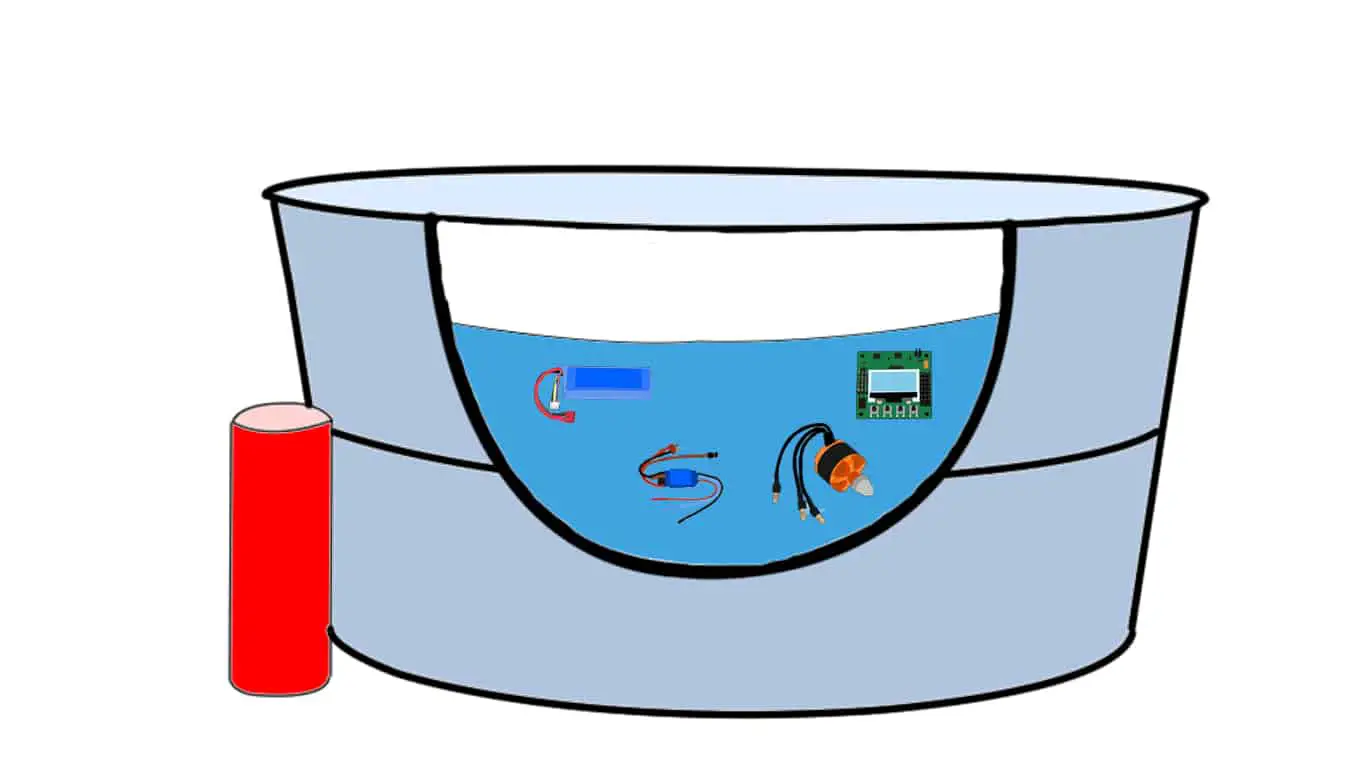The world can be a harsh place. This is very true for your quadcopters and multirotors as well. Water to the electronic components inside your craft is almost like lava to the human body. It can fry it. It is very easy to water damage your quadcopter if you live in a place where it rains often and unexpectedly. It is also pretty easy to do the same if you accidentally crash land into a pond or a lake. It is then a very good idea to waterproof those components. The information in this post may help you waterproof your quadcopter or any type of RC vehicles – RC Helicopters, cars, planes and other electronic components.
Warning: Ideally use the information in this post to experiment on a cheaper quadcopter and then move up slowly. You do not want to mess up your more expensive crafts. We do not claim any liability for any damages that may be caused.
Also, this is not a method to turn your craft into a submarine. We recommend that you do not submerge your electronic components inside water on purpose, though it is highly likely that your components will function even if it crash lands into a water body after water proofing it. This information is to be used to make your craft more water resilient instead.
Note: This process involves disassembling your craft.
Tools you will need
- Quad copter to waterproof
- Corrosion-X HD
- Normal sized pan
Step 1: Disassemble your quadcopter
Disassemble your quadcopter and get the ESC, BEC, LiPo battery, motors and the flight controllers out. This process is different for different quadcopters and its best to search the internet on how to disassemble your particular model, especially if you are using a ready to fly quad.


If you are using a ready to fly model and are unsure of how to disassemble, you will have to do an internet search on disassembling your particular model.
You can very well waterproof your quadcopter to an extent without fully disassembling your quadcopter by simply removing the body’s top and submerging the open quad with the electronic components into Corrosion X or spraying it with it. However, it is not as efficient.
Â
Step 2: Waterproof your quadcopter
Pour a decent amount of Corrosion X into a pan (1/4th of a normal size pan should do).

Submerge each of the components of the quadcopter into it and make sure that the solution reaches every part of your component and coats it all over.
If any of your electronic components are placed inside casings, you might have to uncase it before you submerge it. Servos for example, are a good example for this.
Alternatively, you can spray Corrosion X onto your components, but make sure that it reaches every part and corners of it.

After you are done, make sure to leave your components alone for at least an hour before exposing it with water and/or assembling it back.
Here is a video by FliteTest going through the process. The guy also brings up some more interesting tips:
Alternative method for waterproofing with Never Wet
Another way you can waterproof your craft is by using Rust Oleum’s Never Wet. This package comes with two spray cans – The base coating and the top coating.
The process is pretty simple – spray the base coating on your components, wait for half an hour and then spray the top coating.
The spraying will tend to make your electric components have a sort foggy, hazy look which shouldn’t be a problem because the components are typically placed inside your quadcopter. Here is a video that may help you:
Conclusion
That’s all folks! Hopefully the information in this post is helpful for you and your quadcopter. If you have any questions, please do not hesitate to drop a comment below!


